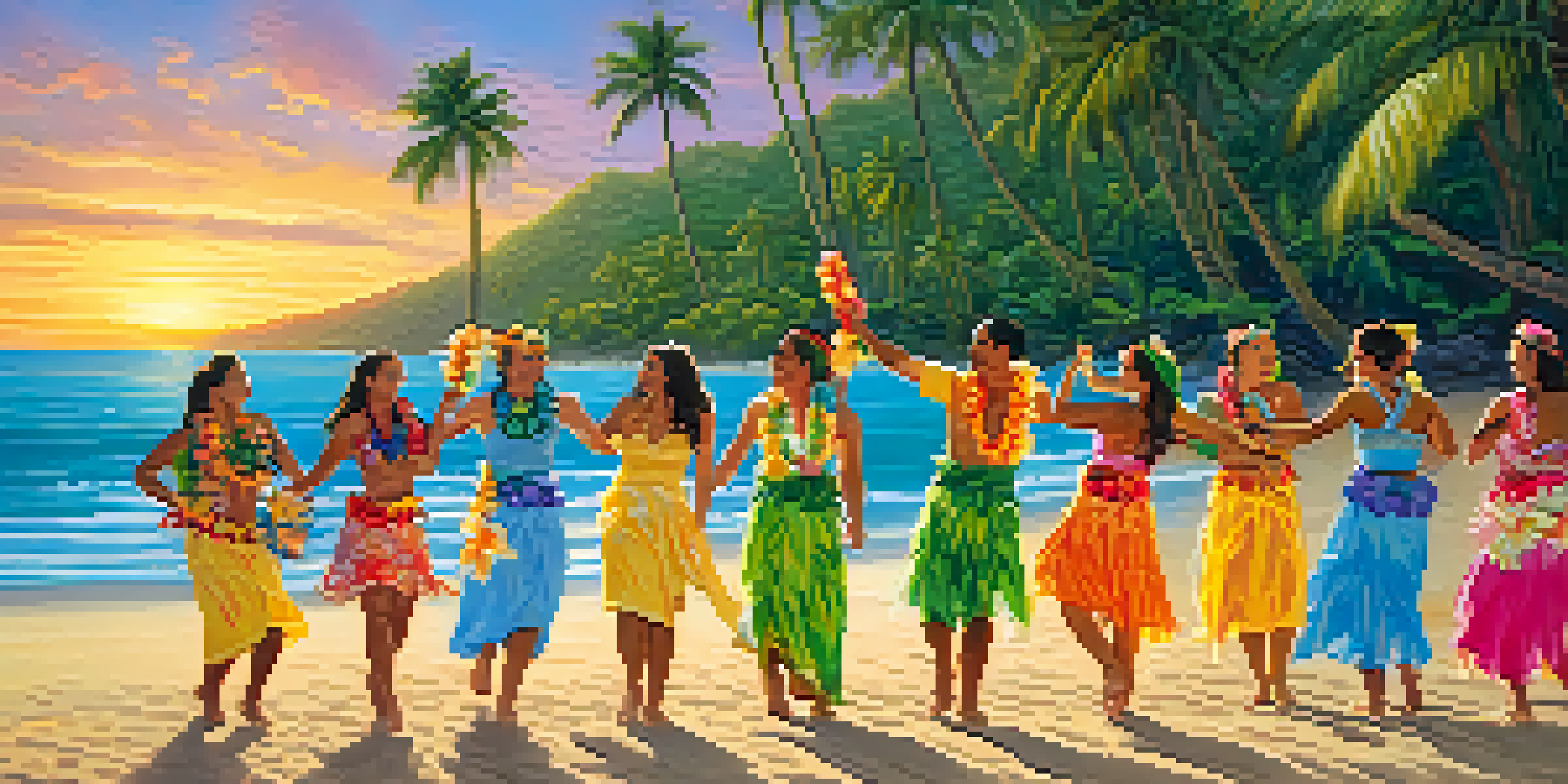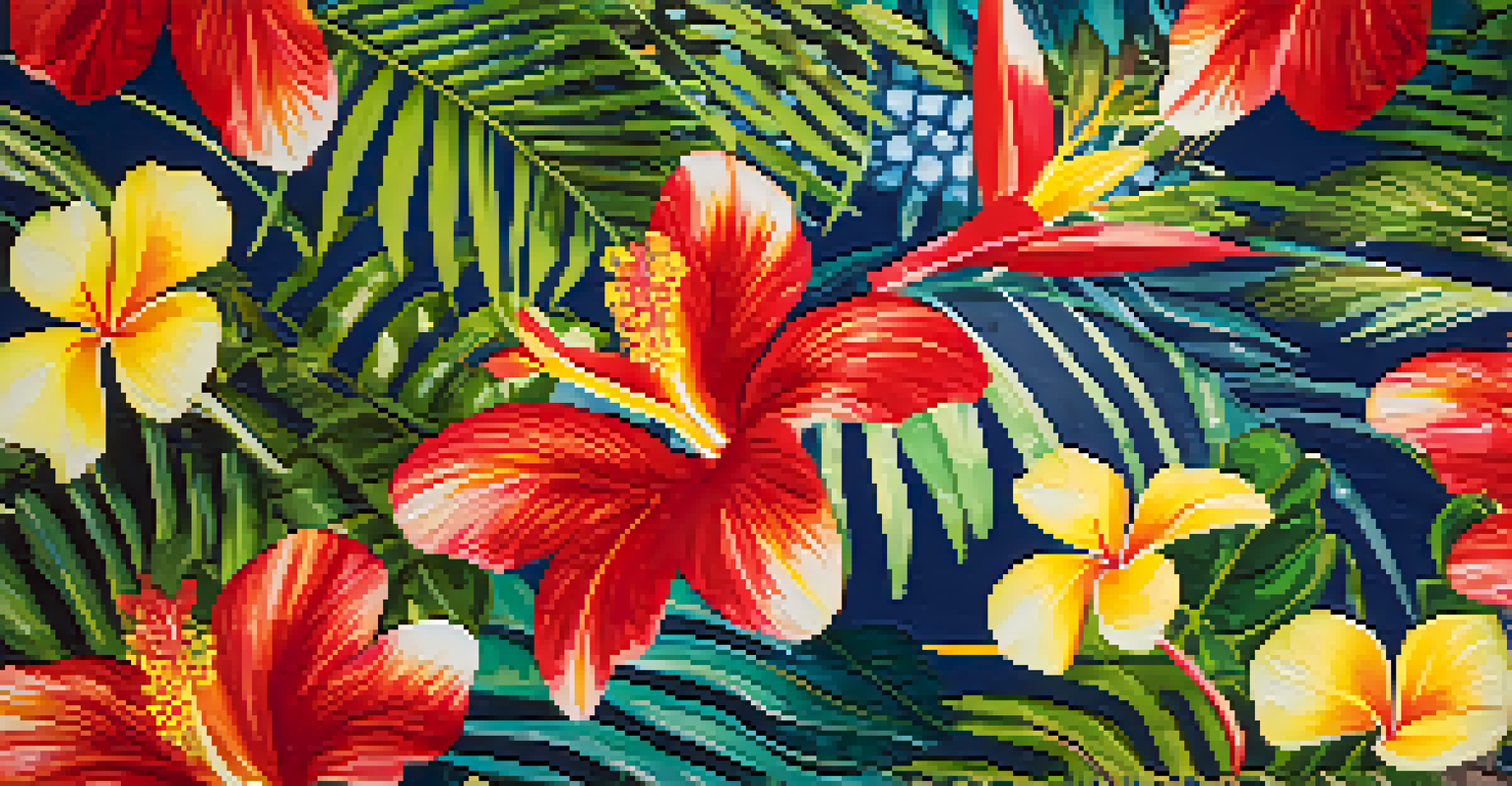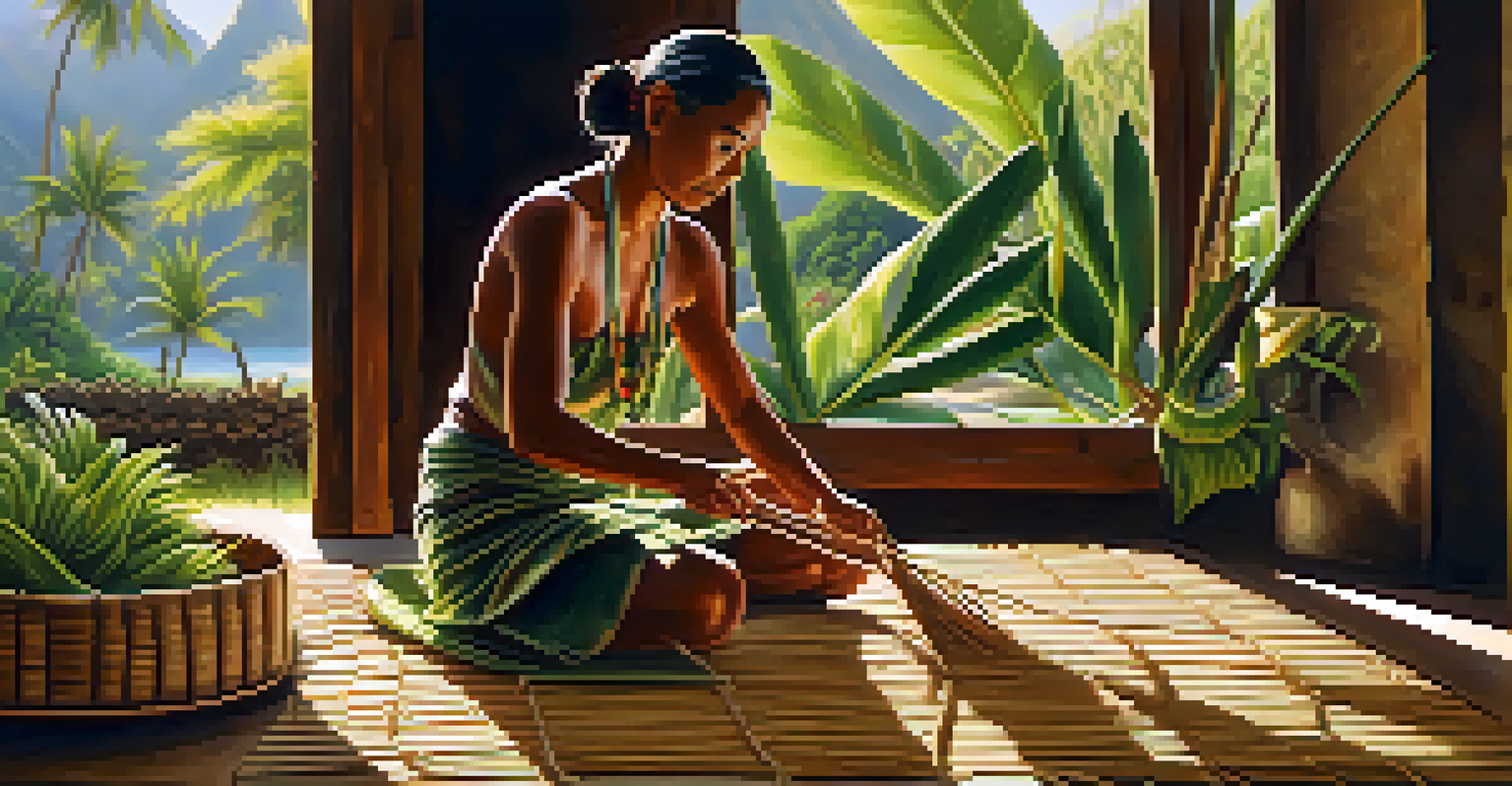Traditional Hawaiian Clothing: A Deep Dive into Aloha Attire

Understanding the Importance of Aloha Attire in Hawaiian Culture
Aloha attire is more than just clothing; it embodies the spirit of Hawaii. Traditionally, these garments reflect the culture's deep connection to nature, family, and community. Wearing Aloha shirts or mu'umu'u signifies respect for Hawaiian traditions and a celebration of life.
Hawaiian clothing is a reflection of our culture and heritage, telling a story through every stitch and pattern.
In Hawaiian culture, clothing often tells a story, showcasing the wearer's identity and heritage. The vibrant colors and patterns are inspired by the natural beauty of the islands, from lush greenery to the deep blue ocean. This intrinsic connection to the environment is a hallmark of Aloha attire.
Moreover, Aloha attire plays a vital role in various ceremonies and celebrations, symbolizing unity and joy. Whether it’s a wedding, luau, or family gathering, these garments create a sense of belonging and shared experience among participants.
The Evolution of Hawaiian Clothing Through the Ages
Traditional Hawaiian clothing has evolved significantly over the centuries. Initially, Hawaiians wore garments made from natural materials like tapa, a cloth made from the bark of trees, and lauhala, woven from palm leaves. These materials were not only functional but also held cultural significance.

With the arrival of Western influences in the 19th century, Hawaiian clothing began to incorporate new fabrics and styles. The introduction of cotton and silk led to the creation of the Aloha shirt, which became synonymous with Hawaiian culture. This blend of styles highlights the adaptability and resilience of Hawaiian traditions.
Aloha Attire Reflects Hawaiian Spirit
Aloha attire embodies Hawaii's culture, showcasing deep connections to nature, family, and community.
Today, while modern materials dominate, many still cherish and wear traditional garments during cultural events. This fusion of old and new reflects Hawaii's vibrant heritage, allowing it to thrive in contemporary society while honoring its roots.
Key Elements of Traditional Hawaiian Clothing
Traditional Hawaiian clothing features distinct elements that set it apart from other cultures. One significant aspect is the use of bold, vibrant colors and intricate patterns inspired by the natural surroundings. This visual language communicates the beauty and diversity of the Hawaiian islands.
Fashion is not just about clothes; it's an expression of identity and a celebration of culture.
Another vital component is the use of specific garments like the mu'umu'u and the Aloha shirt. The mu'umu'u, a loose-fitting dress, was designed for comfort and ease, often adorned with floral patterns that echo the island's flora. In contrast, the Aloha shirt, with its short sleeves and relaxed fit, has become a global icon of casual wear.
Accessories also play a role in traditional Hawaiian attire, with items like leis, which are garlands made of flowers or leaves, adding a personal touch. Leis are not just decorative; they symbolize love, friendship, and respect, enhancing the overall significance of the clothing.
The Role of Patterns and Symbols in Hawaiian Clothing
Patterns and symbols are integral to traditional Hawaiian clothing, each carrying its own meaning. For instance, floral patterns often represent the islands' lush landscapes, while geometric shapes can symbolize various aspects of life, such as strength and resilience. These designs are more than just aesthetics; they tell stories.
Common motifs include the hibiscus flower, which symbolizes beauty and love, and the ocean waves, representing life and motion. By incorporating these elements into clothing, wearers connect with their heritage and express their identity. It’s a beautiful marriage of art and meaning.
Traditional Clothing's Evolution
Hawaiian clothing has transformed over time, blending traditional materials with modern designs while honoring its heritage.
Moreover, the significance of these patterns extends beyond personal expression; they serve as a reminder of the shared values within the Hawaiian community. Wearing these clothes fosters a sense of pride and belonging, reinforcing the bonds of family and culture.
Modern Interpretations of Hawaiian Clothing Styles
As fashion evolves, so too do interpretations of traditional Hawaiian clothing. Modern designers are taking the classic elements of Aloha attire and infusing them with contemporary flair. This blend honors tradition while appealing to a wider audience, both locally and globally.
New materials and innovative designs bring a fresh perspective to traditional garments. For instance, Aloha shirts now come in various fits and styles, catering to different tastes while still paying homage to their roots. This evolution allows more people to appreciate and embrace Hawaiian culture.
In addition, fashion shows and cultural events often showcase these modern interpretations, creating a platform for designers to express their creativity. This not only promotes Hawaiian fashion but also educates audiences about the significance of the Aloha spirit.
Preserving the Craft of Traditional Hawaiian Clothing
The art of making traditional Hawaiian clothing is a craft that requires skill and dedication. Many artisans are committed to preserving these techniques, from weaving lauhala to creating tapa cloth. This dedication ensures that future generations can appreciate and wear these garments with pride.
Workshops and classes are being held across the islands, teaching both locals and tourists the intricacies of traditional clothing-making. These educational initiatives not only preserve the craft but also foster a sense of community and cultural pride among participants.
Global Influence of Hawaiian Fashion
The Aloha shirt has gained international popularity, promoting Hawaiian culture and sustainable fashion practices worldwide.
Moreover, by supporting local artisans and businesses, individuals can help sustain this important aspect of Hawaiian culture. Wearing and promoting traditional clothing is a way to honor the past and contribute to the future of Hawaiian heritage.
The Global Impact of Hawaiian Fashion Trends
Hawaiian fashion has transcended the islands, influencing global trends in casual wear. The Aloha shirt, in particular, has made its mark on the international fashion scene, often seen in tropical-themed parties and casual gatherings worldwide. Its laid-back style encapsulates the essence of island life.
This global popularity has also sparked an interest in Hawaiian culture, encouraging people to learn more about its history and traditions. As more individuals embrace Aloha attire, they become ambassadors of Hawaiian values, promoting the spirit of 'Aloha' wherever they go.

Furthermore, the rise of sustainable fashion has prompted a renewed focus on traditional Hawaiian clothing. Many consumers are seeking ethically made garments that honor cultural heritage, leading to a greater appreciation for the craftsmanship behind Aloha attire.